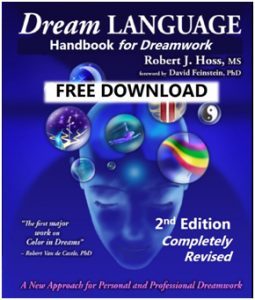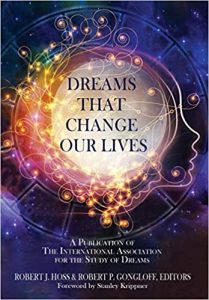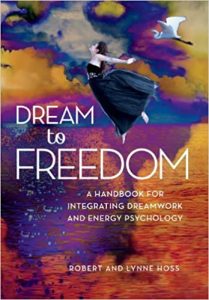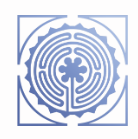Frequently Asked Questions about Dreams
The word dream stems from the Middle English word, dreme which means “joy and music”
Questions about Dream “Language”
1) What does Research show about the Dreaming Brain?
a) Most of the Brain is active when we dream, only the executive and sensory functions are off line (the rational thinking and sensing parts).
b) Dreams seem to process unresolved emotions – the Limbic system (that associates emotions with sensory information) is highly active in the dream state.
c) Language centers on the left side of the brain are off-line, but the same centers on the right side, responsible for processing associations are ON in dreams.
Therefore the Language of Dream is that of association, in particular emotional associations, not the literal naming by which we identify things in waking life.
2) Why do I call it a “Dream Language”?
If we see something when we are awake, we use Language to identify it by name. Lets say you see a person you know – you immediately identify them by name – say Joe for example. This identification or naming is performed primarily by a center in the left hemisphere that processes speech. There is also an unconscious emotional identification, and associated feelings, images and memories, that takes place with objects we see in waking life. For example with Joe: seeing him triggers memories of past encounters with Joe and we have an emotional reaction to Joe (lets say we fear and avoid him because of his verbally abusive manner). This emotional identification of Joe takes place unconsciously in the right hemisphere and other parts of the brain such as the limbic system which associates emotion with sensory input as an instinctual protection mechanism.
When we DREAM the speech center is off line so when we see Joe in our dreams – it is NOT Joe – the name is meaningless to the dreaming sleeping brain. The other parts of the brain, however, that process the emotional memories associated with Joe in waking life become active while dreaming (centers in the right hemisphere and limbic system). So the Joe we see in a dream is the memories and emotions we associate with the image of Joe. Our brain borrows the image of Joe to represent an emotion (in this example perhaps the fear of verbal abuse).
What a dream does is process unresolved emotional events of the day. It is this limbic system that associates imagery with emotion that creates the dream image to represent emotions being processed. If as in this example the event happens to relate to the fear of verbal abuse –then your brain looks for some image to relate to that fear and so it picks the image of Joe to represent that emotion.
The language of dreams (or identity of a dream image) is thus the emotions and memories we associate with that image in waking life.
To analyze the dream we therefore use techniques to determine the dreamers associations with the dream image. I use a role-play approach.
3) What does Color Mean in Dreams
Color in dreams appears to relate to emotions associated with that dream image. Dreams seem to be stimulated somewhat by the limbic system – which is a part of the brain that associates emotion with incoming visual stimulus (including color) as a part of our instinctual response system to alert us to dangerous situations. So that part of our brain, which is active during dreaming, assigns emotions to color and thus creates color in our dreams to represent those emotions.
Research shows that our autonomic nervous systems react unconsciously to color in pretty much the same way in all Humans – red increases and blue decreases heartbeat, breathing, and other automatic functions.
Blue = (parasympathetic) calm and relaxation = cooler emotions, tranquil, calm, sensitive, belonging, focus inward [I need to relax]
Red = (sympathethic) alerting and arousal = desire, excitement, aggressive, passion, energy, focus outward [hat = I want to live life to fullest]
White = awareness, newness, rebirth,
Grey = barrier, shielding, isolation, detachment, non-involvement [grey 4 wheel drive trucks]
Black= unconscious, unknown, death of the ego
4) What is the “Image Activation Dreamwork” approach that you teach?
a) First Step – dreams speak in Association: Look for them to speak in picture language and metaphor = “I dreamed that I was trapped in a ditch” = I am “in a rut”
b) b) Function: To understand your personal emotional associations with dream objects define their function or purpose = “door = to keep things out” or “to control what gets in”
c) let the dream speak (image activation) – this keeps the rational thinking brain diverted with the fantasy of pretending it is a dream object, while the right brain (the emotional brain) speaks the hidden emotional content and associations. Example: “I dreamed I was standing in a sweet potato patch across a barbed wire fence from my boss – In waking life I just can’t seem to do anything right, she is always disapproving of me and my work”. When the dreamer “became” the sweet potato he stated: “butter me up and I’ll be good” , just what he wanted to tell her, but was much too proud to do.
When you “become” the dream image answer the following questions as that dream character of image (or alternatively try to think of how the dream image might answer those questions):
6 “magic” questions:
“What are you (name & describe yourself as the image) ..Ex: ”I am a door ”
“What is your purpose or function .. Ex:.”My purpose is to keep people out. ”
“What do you like about being this image.. Ex: “I can control who comes in.”
“What I dislike about being this image is… Ex: “no one comes around any more”
“What I fear most is .. Ex: “I will be all alone.”
“What I desire most is … Ex: ”to open up and let people in. ”
Relate to Waking life: Are these statements about how you feel about some situation in waking life. When is the last time you felt that way. Recall a specific event and what you felt. How does that situation and those feelings relate to the dream?
General Frequently Asked Questions about Dreams
Q. I rarely remember my dreams. How come?
A. All people dream, during a phase of sleep called REM sleep. REM stands for Rapid Eye Movement. Whether or not you remember your dreams depends on a multitude of factors varying from your personality type; to when and how you wake up; to, probably the most important factor, how interested you are in recalling and understanding your dreams.
Q. Are there ways I can improve my dream recall?
A. Yes. First you have to create a true interest in the dream and what is going on within yourself. Secondly, before falling off to sleep, tell yourself multiple times that you are going to dream and recall a dream tonight. Third, put a pad of paper and pencil by your bed to record it.
Q. My dreams are pretty bizarre. Do they have any meaning or relevance to my life?
A. Yes, they generally all have direct relevance to situations in your waking life. The bizarre nature of dreams is due, in part, to the fact that the dream comes from parts of the brain that are less dominant when we are awake. Therefore the metaphor and picture language used by this part of the brain is less familiar to us. Dream language actually makes perfect sense once understood – it is simply a different language from the language used by our waking mind.
Q. How do I figure out what my dreams mean?
A. There are many ways to work with dreams, but I have developed a technique that speaks the dream language. An image of interest to you is chosen from the dream, and then you work with it in specific ways, the most effective being to “role-play” the image and let it speak.
Q. What do you mean by dream “image” or dream “element”
A. A dream image is a visual experience in the dream, that “symbolize” something that your mind subconsciously or emotionally associates with that image. It can be a person who you know or don’t know, an animate or inanimate object like a kitten or car, a place such as a field or stadium. A dream element includes imagery but is a broader term that includes other experiences in the dream such as modifiers such as color and direction of movement; sensory experiences such as music, smell, taste and sensory feelings such as cold or pressure.
Q. I have a book at home called a Dream Dictionary that tells me what different images mean. Will this help me figure out what my dreams mean?
A. No. Even the best “dictionaries” only list common associations and rarely will any of these relate to the specific personal association that your dream image was created from. Dream images are created from your own inner personal emotional associations with the dream character, object, feeling or sound in your dream. Dream dictionaries are often just guesses or the associations of the author, sometimes based on cultural traditions, but quite often nonsense. Even the very best are only useful for suggesting possible metaphors – but unless there is an ”aha” experience of recognition when you read the dictionary “meaning” then it is wrong. For example, if you and I dreamed of a doorway, it would mean something very different to each of us. To you it might be an opening, to me it might be something to control who gets in, and so on. The key working with your dreams is to figure out what each image means to you. When you do you will get that “aha” feeling or connection between the dream and waking life.
Q: Is there any use in trying to understand my dreams?
A: A true understanding of even a small part of your dream can reveal a lot of hidden information about how you are feeling about or dealing with a waking life situation. The dream is generally trying to find solutions to waking life situations you did not solve the day before. Therefore, understanding what your dream is attempting to do will help this process. Dream work is based on sound psychological theories, and is used by many therapists around the world. However, with instruction and practice, a dreamer can learn to work with their own dreams. If you are interested in taking my class on April 12, please call 480-488-1670.
Q: Do we all dream?
A: All mammals (with minor exceptions) evidence REM sleep, which in humans accompanies vivid dreaming. Adults have REM dreams 25% of the night, children 50%, infants up to 80%, old age 15%. During REM lab tests reported dreams 82% of the time; NREM sleep = 42%. REM dreams were reported as longer, vivid, animated, emotionally charged, less like waking life. Non REM reports are more thought-like, and contain more representations of actual waking life events.
Q: How often do people normally recall dreams?
A: Upon REM awakening in the lab about 82% recalled dreams; In about 5 minutes 50% of the content is forgotten, after about 10 minutes, 90% is lost. Memory systems are largely responsible (working memory is off line) but personality may play a small role in this since those with artistic and imagery abilities, and those with greater memory for visual images recalled more often. No differences between the sexes were found. I have found INTEREST in recalling dreams to be the key.
Q: Is there a purpose to dreams?
A: Findings are that dream sleep (REM) seems to relate to learning and memory and possibly to restore mental well being; while non-dream (NREM) have been tied to restoration of the physical body although controversy still remains about this.
a) Deprivation = dream sleep is recovered more precisely than non-dream sleep – the body recovers by increasing dream sleep first; REM deprivation = hallucinations; memory and learning problems; impaired ability to do tasks requiring focused attention; maintaining a straight line of thought, irritability and suspiciousness; NREM deprivation = subjects being physically lethargic.
b) Dream sleep = processing of emotional memories; revitalizing and processing. Hobson at the Massachusetts Mental Health Center has found that brain activity during dreaming rehearses memory patterns, to harden them into long-term memory or to keep fading connections alive.
Q: Why are dreams so bizarre and unreal?
A: There are a number of reasons. First: the part of the brain responsible for rational interpretation of stimuli, is not active (dorsolateral prefrontal cortex). However, brain mechanisms responsible for awareness and recognition of stimulus are as active as when we are awake – we are conscious and aware and processing all the information arising from within in our brain – but no longer censor it with the filter of rationality – in our dreams we are free to experience all the information about our life situations. Second: the left lobe and language center of the brain (which assigns things name identities) is off, while the right lobe (which processes associations not words) is on. Therefore dreams speaks in associations – pictographs (picture language), metaphor, analogies, phrases, and identify things by function and feeling – not names.
Q: What does the latest sleep and brain research reveal?
A: There is much being learned from deep brain scans and imaging techniques, about which brain centers are active and inactive in dreams. This versus the earlier methods that relied on lesion studies and EEG (cortical) measurements. Dreams sleep is a state of generalized brain activity with executive functions shut off. In other words we are conscious and the brain is operating, but the senses are disconnected, we are essentially paralyzed and the logic we depend on to perceive a rational world, is off-line. All input comes from within, from memories and emotional residues of the day’s experiences. Dreams appear to process emotional memories: when awake the Limbic systems function is to associate emotions with sensory images – when dreaming this may be reversed in that the Limbic system becomes active and takes unprocessed emotional situations from the day and associate a dream image with that emotion.
Q: Do Men and Women, Old and Young dream alike?
A: Content Analysis of dreams show the following:
a) Women dream equally of men and women, but 67% of characters in men’s dreams are other men
b) more aggression than friendliness, more misfortune than good fortune and more negative than positive emotions (men and women all cultures).
c) Men have a higher degree of aggression in dreams than women
d) The dreams of older dreamers do not differ much from college students with the exception of a decline in physical aggression and negative emotions; dream content doesn’t change much according to long term journaling studies
Q: Are children’s dreams different than adults dreams?
A: Yes, in the following ways:
a) dream recall is lower than in adults (20-30%) until the child reaches the age of 9 to11.
b) Part of brain that sets stage for dream (processes visiospatial skills -the inferior parietal lobe) is not functionally complete until about ages 5 to 7
c) Content: dream content matures with age, up until 13 to 15 years.
Under 5 = bland with static images and thoughts about daily events.
Until 3 to 4 = do not appear in their own dreams
5 to 8 = more story-like with movement and interaction, but not well developed;
9 to 11 dreamer becomes an active participant
11 to 13 – length and content more adult like; begins to correlate to their personality
h) Bad vs Good Dreams: Bad = 64% “bad” dreams remaining good. Bad = 50% had a theme of being chased or attacked; about 40% had a sense of danger or some character was being injured or killed, even though there was no direct threat. Good = most frequent was just having a good time, the next was receiving some gift or having some desired possessions.
Q: Do the blind dream?
A: Whether visual images will appear in their dream depends on whether they where blind at or near birth or became blind later in life. But vision is not the only sense that constitutes a dream. Sounds, tactility, and smell become hypersensitive for the blind and their dreams are based on these sense. Sometimes the dream imagery relates to their condition as it does for the rest of us: “I dreamed that I was walking down a city street, all the windows had their shutters closed”
Q: What are dreams all about?
A: Dreams reflect all aspects of our waking life outer and inner experiences. This includes sensory as well as extrasensory experiences and matters of body, mind and spirit. They place their focus where you primarily place your waking focus. If you are concerned about matters of the body and health, your dreams may reflect worries about your physical condition. On the other hand if you are focused on matters of the spirit, your dreams may reflect this grander image of self. For most of us our dreams are related to dealing with closure. This can be closure on some problem we are trying to solve, but a mostly dealing with closure on unprocessed emotional events of the day, threats to our inner self from without or within. These might be experiences that don’t fit our internal view of self and reality, things that trigger unresolved traumas or internal arguments. Dreams try to gain balance and closure by either trying to find a fit or by compensating to try to changing the inappropriate inner view of self (transformation).
Q: What about nightmares and recurrent dreams?
A: Nightmares can be the result of many conditions, among them: a) the result of an unresolved trauma; b) medical problems requiring attention; c) heavy stress; d) severe threat to one’s self-image or social view of life. In children nightmares are common, beginning at around age 3 to age 7 or 8. The most common theme in children is being chased by monsters or creatures.
Q: Are there common themes in dreams and what do they mean?
A: There are some common archetypes or mythical like patterns that the great psychologist and luminary C.G. Jung wrote about which relate to what he considered “collective” psychological transformation processes within all humans. Most dream themes we consider common (such as flying or seen as naked or teeth falling out) are only common because of the frequency which they occur in dreams. They all have very personal meanings for us however, as related to our own personal emotional associations with that specific dream event. Some seem to have a common meaning simply because we use common metaphors in life and have somewhat common associations with things as humans. For example most of us may relate taking a test in a dream to something testing us in life at the time; or flying to a sense of freedom or being in control; or being naked in public as revealing your inner self. To be sure,ask yourself what the feeling is and what the purpose of function of what I am doing in the dream is?
Dreaming your teeth are falling out can mean “I am losing something I can’t replace” to one person and “I am loosing my “bite” or power” to another.
Q: Can dreams be psychic and foretell the future?
A: In a poll, 67% of Americans said they have experienced Deja Vu in their dreams, occurring more often in females than males. The book “Dream Telepathy” by Stanley Krippner et.al. indicated statistically significant psi capability in the lab. There is also a wealth of anecdotal evidence. For example a few days before the 9-11 World Trade disaster a person reported the following dream to me: “I was looking across the water and all the buildings were toppled like pick-up sticks. All went dark and people were rushing to the radio and TV to find out what had happened.”
Q: Can we have visitations in dreams from loved ones who passed away?
A: There is no scientific evidence one way or the other, but the anecdotal evidence is compelling: “I dreamed that my father and I were walking in a beautiful field. At that point he left me and waked into the sunset. I said to him ‘so long Captain’.” At that moment the dreamer woke up, and a few minutes later he received a phone call regarding the unexpected passing of his father.
Q: Is there a web site besides this one where I can go to to learn more about dreams?
A: yes go to the “links” on this site or to www.asdreams.org






